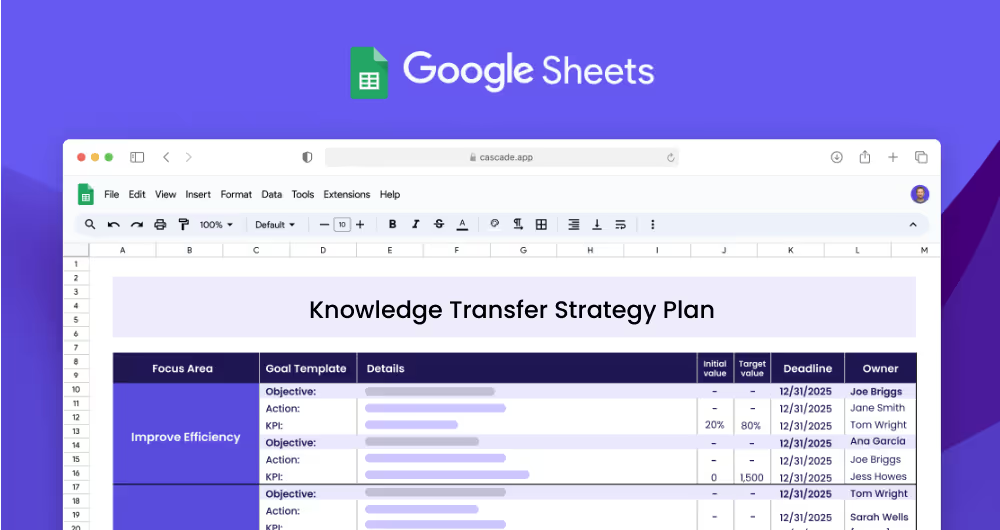A Knowledge Transfer Strategy Plan is a set of organized steps that a team can take to securely store and share institutional knowledge and best practices with other members of their organization. This plan helps teams to efficiently transfer knowledge among each other, increasing productivity and reducing the amount of time spent searching for the right resources or answers.
Each focus area has its own objectives, projects, and KPIs to ensure that the strategy is comprehensive and effective.
This Knowledge Transfer Strategy Plan template is designed for teams of all sizes and industries. It provides an easy to understand roadmap for how to store and share knowledge within an organization. This template helps teams to create a plan that outlines the objectives, actions, and KPIs necessary to transfer knowledge effectively.
A focus area is the overarching theme of a Knowledge Transfer Strategy Plan. It outlines the main areas of focus for the plan and breaks them down into specific objectives. Examples of focus areas could include storing and sharing institutional knowledge, creating a training program, and strengthening team collaboration.
Objectives are the goals that your team wants to achieve to complete the focus area. Each objective should be achievable and measurable, so that you can track your progress as you work towards completing the focus area. Examples of objectives could include creating a knowledge database, improving knowledge transfer, developing training materials, and increasing communication.
KPIs, or Key Performance Indicators, are measurable targets that help you track your progress towards completing each objective. KPIs are important because they provide a way to measure the success of the plan. They should be specific and achievable, with an initial and target value. Examples of KPIs could include increasing the number of knowledge documents stored, decreasing the time required to transfer knowledge, and increasing the number of users using team collaboration software.
Projects, or actions, are the steps that need to be taken in order to achieve the KPIs. Projects should be actionable and achievable, and should be tracked and monitored so that progress can be measured. Examples of projects could include developing a database to store and share knowledge, encouraging knowledge sharing among team members, creating training materials for team members, and establishing weekly team meetings.
If you’re ready to accelerate your strategy beyond simple spreadsheets and see faster, more tangible results, Cascade Strategy Execution Software is your ultimate ally. Offering real-time updates, centralized collaboration, and automated reporting, Cascade simplifies the process of tracking progress, adapting quickly to changes, and maintaining alignment across your team. Upgrade to a more powerful and efficient approach with Cascade to see your strategic goals come to life quicker. Sign-up for free or book a demo with one of our strategy experts to explore how Cascade can streamline and optimize your strategy execution.


